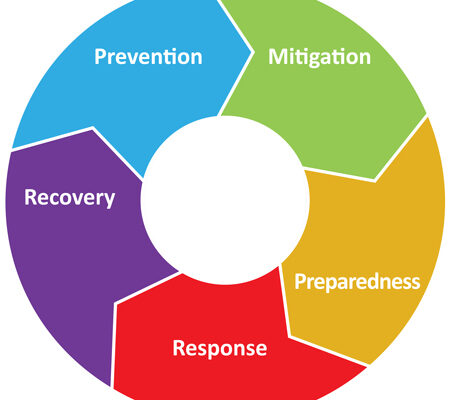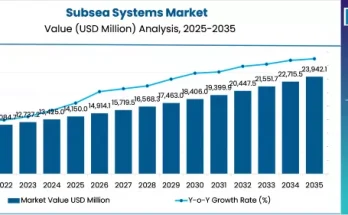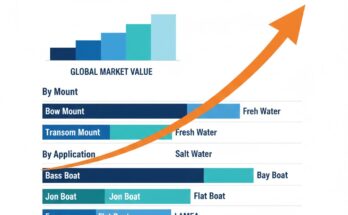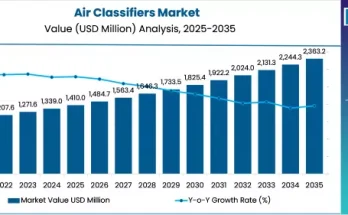According to Fact.MR report, the global incident and emergency management market is likely to increase at a CAGR of 6.4% from 2022 to 2032, from USD 124.0 billion in 2021 to USD 169.09 billion by 2026 and to USD 245.6 billion by 2032.
Increasing criminal activity and terrorist attacks, as well as the incidence of unanticipated natural catastrophes owing to ever-changing climate conditions, are some of the primary drivers projected to fuel incident and emergency management market expansion. The implementation of technologically advanced terror-attack equipment is expected to fuel the requirement for incident and emergency management systems.
The growing number of coronavirus infections has harmed many lives, resulting in multiple fatalities and affecting the economic structure. Due to the pandemic scenario, states and local governments have granted emergency relief money for small enterprises in the form of interest-free loans or grants to COVID-19-affected firms.
The optimization of risk management has swiftly emerged as one of the most effective defences a company may have to secure business continuity. Businesses are leveraging the skills of risk teams by making strategic investments in risk technology.
Even while being proactive is the greatest risk management strategy under normal conditions, because the pandemic is a danger that has already occurred, there has been an emphasis on ways that can respond rapidly to the developments.
Incident and emergency management companies have been developing new technologies such as NG9-1-1, early warning systems, tsunami applications, complex early warning systems, advanced communication technologies, GIS solutions, and simulation tools and solutions to aid in emergency planning, preparation, and mitigation.
These new technological advancements and services give the incident and emergency management sector competitive advantage.
Although the installation of incident and emergency management solutions improves corporate profitability in the long term, it is expensive to deploy and maintain, which influences the acceptance rate of standardised incident and emergency management systems. The installation of video surveillance, detecting sensors, and controllers is expensive for SMEs.
As a result of their financial constraints, SMEs frequently employ low-cost incident and emergency management systems, such as poor camera resolutions and detection ranges, weakening security against assaults, thefts, and criminal activities. It results in false alarms. The high cost of installation and maintenance is a problem for SMEs in the incident and emergency market.
North America is predicted to have the greatest incident and emergency management market share in the global incident and emergency management market, with Asia Pacific (APAC) growing at the fastest CAGR during the forecast period.
North America is predicted to be the region that adopts the most incident and emergency management solutions and services. The developed economies of North America, such as the United States and Canada, place a high value on innovations derived from R&D and technology.
Due to increased government spending on emergency and disaster management systems to protect people from calamities, the Asia Pacific region is predicted to be the fastest-growing area in the incident and emergency management market.
Key Takeaways:
- The component sector’s communication system from the incident and emergency management market is predicted to expand at the fastest CAGR of 6.1%.
- Hazard propagation simulation tools are predicted to increase at a rapid pace in the simulation sector, with a CAGR of 6.3%.
- China is estimated to have a $14.1 billion incident and emergency management market by 2032, with a CAGR of 5.9% during the analysis period.
- The incident and emergency management market in the United States is estimated to reach $84.2 billion by 2032, with a CAGR of 6.2% during the study period.
- The UK is estimated to have a market size of US$ 11.6 million in the incident and emergency management market by 2032, with a CAGR of 5.7% during the research period.
- Japan is predicted to have a US$ 13.2 billion incident and emergency management market by 2032, with a CAGR of 5.6% throughout the research period.
- South Korea is predicted to have a market size of US$ 8.8 billion in the incident and emergency management market by 2032, with a CAGR of 5.2% throughout the research period.
COMPETITIVE LANDSCAPE:
Honeywell, Lockheed Martin, Motorola Solutions, Siemens, and NEC are among the major players in the global incident and emergency management market. To further extend their presence in the global incident and emergency management market, these vendors have used a variety of organic and inorganic growth tactics, such as new product releases, partnerships and collaborations, and mergers and acquisitions.
- Honeywell announced the launch of the Honeywell AMIR Service in June 2021. The service delivers operational technology (OT) cyber security detection and quick response for current and upcoming cyber threats 24 hours a day, seven days a week.
- Honeywell developed a new production line in May 2020 to create disposable face masks to assist the UK government during the COVID-19 pandemic.
- In May 2020, NEC Corporation also completed the development of a biometric authentication terminal that can give users high levels of authentication accuracy and convenience in a variety of contexts. This new solution also includes facial recognition technology, which not only improves the system’s accuracy but also provides a cost-effective option to its consumers.
- Lockheed Martin introduced an LTE-over-Satellite system in March 2019 to provide connectivity to remote places in order to assist organisations in natural catastrophes such as hurricanes, wildfires, earthquakes, catastrophic floods, or volcanoes.



